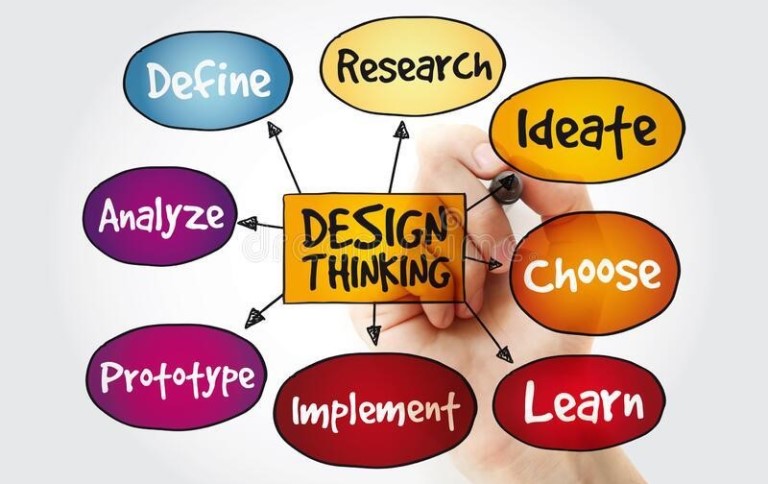You need to visualize the concept of design thinking in education as a primary way of solving problems and teach theory and practical in the classroom. Design thinking has definite steps that one must understand to solve the problems in classroom teaching. We will deep dive into design thinking in education in this blog in a very detailed way. Before that understand what design thinking in education is?
Design thinking in education is a way of teaching the students with the help of design concepts. The design concepts such as optimization, design algorithms such as heuristic search, genetic algorithms are very important in understanding the design principles in general not only in the education field but also in other fields. However, we are not going to touch on the algorithms for design thinking in this article. However we will mostly touch base on the subjects of design, what are the steps required in the design thinking, and how you will benefit from the design thinking course of the Great Learning institute and move forward in the journey of education by applying the design thinking principles and steps in the field of education.
The design thinking methods provide us the most fundamental understanding of all the design principles in the field of education.
Design thinking in the education
There are definite steps in the design thinking those are Empathize, Define, Ideate, Prototype, Test, Reiterate, and Close.

Empathize
This has a deeper meaning in the field of education. One has to see what others’ expectations are, what they want, and understand their point of view by putting on their shoes. In the field of education, one must think about how to apply these principles to the users or the students in the class. Each student wants are different and one must empathize with his way of looking at the problems and solve them holistically.
And empathize means each student’s ability to grasp the subject and the understanding about the student’s want thereby helping the students to overcome their shortages and to learn and excel in their chosen fields.
Define
This is the second step in design thinking that is to define the problems at hand and come up with the solution. As we have seen the wants are different and thus there is no one unique solution for all. The resolution of the problems must be understood and taken from all the students so that we come with a lot of resolutions to the problems at hand. One student may be thinking in a different way than the other students. Thus we need to work collaboratively with all the students to arrive at the definition of the problems and their resolution. The definition is to learn by taking into account all the student’s goals and the unique nature of problem-solving methods.
Ideate
Ideate is to come up with ideas in problem-solving methods and resolving to the utmost satisfaction of all. Each student must be encouraged to come up with ideas to solve the problems. Once you do this, you will notice that each idea is unique and thus there is no one unique way of approaching the problems. The students learn from each other and thus the teacher should help students to hone their creativity and way of problem-solving.
Design thinking encourages one to solve the problems in the most optimized way and by applying a lot of suitable methods. Of course, there are these so-called best methods and not-so-best methods. But by being creative the students will slowly get to the next methods of problem-solving.
Prototype
Now that students have ideas, they must be encouraged to make a prototype of the solution. Making a prototype is the fourth step in design thinking. Making prototypes from the ideas generated is not that easy. You need to think in the most advanced way of making the prototype that is unique, suitable, and optimized design.
A prototype helps the designers to come with a solution that is accepted by the customers or the stakeholders to solve their problems in the best possible way. The prototype helps the designers with conceptualizing their ideas and sees what should be the quality of the product, whether it solves the problems, whether it is within the budget etc.
Test
Once the prototypes are made by the students or so-called designers then they should be tested. Various types of testing are done such as system testing, integration testing, performance testing, regression testing, capability testing, user acceptance testing, unit testing, and functional testing. The students are encouraged to pass all the tests that are carried out on their prototypes.
Students will love solving these puzzles in the way of educating themselves with problem-solving methods. If the test fails then we need to do the first process from the above to see if we can come with better solving methods. Great Learning institute provides this design thinking course at Stanford for young innovators.
Reiterate
To make better products from the class for the resolution of the problem we need to understand that there may be failures or success and it is not the final step but stepping stones to success. Achieving success is not a destination but a journey. One must reiterate the steps from the beginning if we meet with failures and also for the different problems we need to start from the beginning. So the steps are iterated for all the unique problems or any failures in the particular problem. The design principles say that we need to constantly reiterate the steps so that we improve the problem-solving methods as well as finding the best resolution to the problems.
Closure
Once the tradeoff is achieved between the cost, time, efforts, scope, and quality we need to stop our design thinking process for particular problems. This way the students know that there is a closure to every problem and must adhere to it based on the constraints discussed above.
